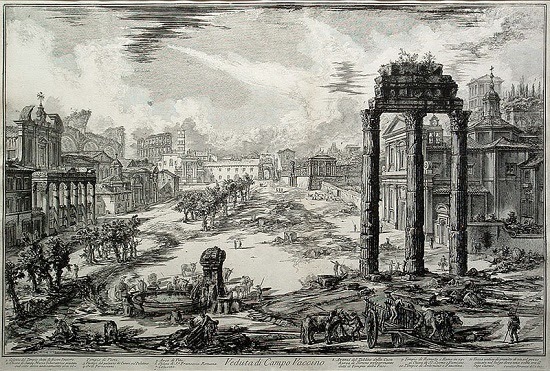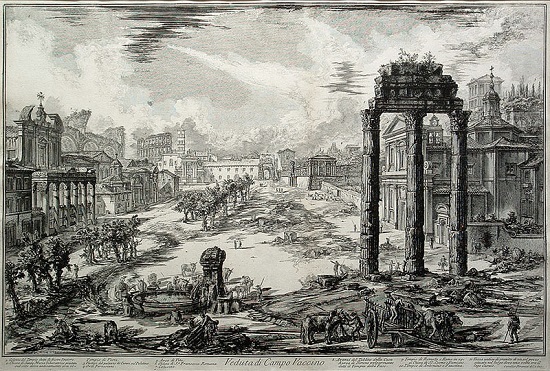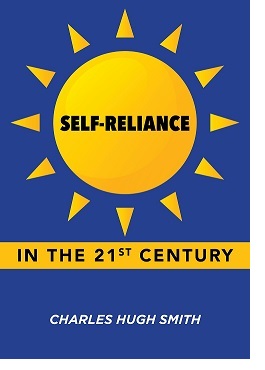
No nation holding on to the present “waste is development/ land fill economy” will make it through the emergent worldwide polycrisis.
Determining why the western Roman Empire collapsed in 476 AD has actually been a parlor video game for at least two centuries, because Edward Gibbon released his huge The History of the Decline and Fall of the Roman Empire (Abridged). Gibbon concluded Christianity had a significant function in damaging the Empire, a view few today share.
Part of the enjoyable of the parlor video game is attempting to determine the one thing that pushed it over the cliff: poisoning from lead pipelines and white wine goblets being a well-known example that has actually been marked down by modern historians.
New research is more holistic, considering aspects that were overlooked or dismissed in the past, such as environment modification and pandemics.
The word polycrisis records this standard view: there wasn’t just something that toppled the empire, it was a confluence of crises that together nudged the empire to the snapping point. The empire was still robust and adaptive enough to manage any one crisis, however the onslaught of several, equally enhancing crises overwhelmed the resources of the empire.
The book The Fate of Rome: Climate, Disease, and completion of an Empire does an exceptional task of discussing the polycrisis of lowered crop yields and pandemics.
Another approach is that of Peter Turchin and other historians, who take a look at social and economic cycles. Turchin holds that the overproduction of elites causes elite conflicts that weaken the management and skyrocketing wealth-power inequality weakens the social coherence of the state/empire. Ages of Discord: A Structural-Demographic Analysis of American History (2016)
End Times: Elites, Counter-Elites, and the Course of Political Disintegration (2023)
Historians such as David Hackett Fischer, author of The Great Wave: Price Revolutions and the Rhythm of History and Thomas Homer-Dixon, author of The Upside of Down: Disaster, Creativity and the Renewal of Civilization, take a look at the function of resource deficiency, greater expenses and decreasing returns for those doing the work of propping up the empire.
Historian Michael Grant makes the case for moral rot unraveling social coherence in his timeless The Fall of the Roman Empire.
Having read all these works and many others on the topic, it appears clear that all of these aspects were part and parcel of the polycrisis that lowered Rome. Each aspect contributed to the empire’s already tremendous problems while minimizing its wealth and resources.
I would highlight 3 such consequential elements among lots of:
1. The exhaustion of the silver mines in Spain, fatally lowering Rome’s cash supply.
2. The Vandals conquering the North African breadbasket of Rome in 435 ADVERTISEMENT. The loss of this significant wheat supply doomed Rome to shortages that might not be made up elsewhere.
3. The decrease of trade with India through Egypt as silver and gold materials diminished, as this trade offered 20% of all Imperial revenues. The Roman Empire and the Indian Ocean: Rome’s Transactions with the Ancient Kingdoms of India, Africa and Arabia
The view corroborated by Peter Heather argues that the Roman Empire was neither on the edge of social or moral collapse, nor fatally weakened by resource exhaustion. What brought it to an end were the barbarian intrusions from what is now Germany and Eastern Europe. The fall of the Roman Empire: a new history of Rome and the Barbarians.
Heather argues Rome’s terrific success eventually led to its undoing, as the small, loosely arranged Barbarian people learned from the Romans how to form bigger, more cohesive and thus more effective social and military organizations. Rome’s tremendous wealth was a magnet that attracted the Barbarians in two ways:
1. They wanted a piece of the rich Roman pie
2. In order to get that slice, they embraced Roman values and methodologies.
As an outcome of what they learned from Rome, the Barbarians became so formidable that Rome might no longer beat them militarily, as they might when the tribes were smaller-scale and less cohesive.
Heather explains that late-era Rome dealt with several existential military dangers, especially from the resurgent Persian Empire that Rome had actually battled for centuries. Regardless of its unwieldy size and administration, Rome managed efficient adjustments that resolved the Persian threat.
Heather notes what other authors have actually concentrated on: Rome deteriorated itself by drawing an artificial distinction in between “Barbarians” and “Romans.” Barbarians were anyone not within the Imperial borders, which were distinct and protected, a point made by Edward N. Luttwak in his timeless study, The Grand Strategy of the Roman Empire: From the First Century CE to the 3rd.
This distinction discounted the Barbarians and raised the Romans, creating a fatal hubris in the Roman elites and misusing a chance to hire the Barbarian people as stable allies. As with all human groups, if the benefits of alliance surpass the risky gains of conquest, then leaders and their fans will choose alliance over conquest, the success of which is far from guaranteed.
So-called Barbarians ended up being the core of the Roman army, and a lot of the most competent generals were either from the Roman hinterlands or they were Barbarians.
Rome had actually long worked out a military-diplomatic policy of beating the Barbarians when they got into Roman areas, however then making treaties with the Barbarian leaders that permitted the Barbarians to trade (and hence share the wealth) with Rome and settle within its borders.
In result, Rome Romanized numerous Barbarian tribes over the centuries, mainly with “soft power” (diplomacy, sharing the wealth, cultural absorption) rather than “difficult power” (military force).
As Luttwak documented, Rome preserved reasonably modest-sized armies, however these armies were professional: really well-trained and armed, extremely disciplined, and well-supplied. It staggers the imagination to check out that a Roman army on the move constructed a wooden barrier every night to allow the soldiers to sleep secure from surprise attack. Rome likewise constructed an exceptional number of irreversible masonry forts throughout its huge territories that acted not simply as strongholds but as supply depots, administrative headquarters and towns with commerce and conveniences.
Heather observes that Rome made a fatal mistake in enabling the re-settlement of not-yet-Romanized Barbarians and then not policing them and not honoring the agreed-upon terms. This let loose a marauding army within Rome’s borders.
To show how polycrises work, Heather also noted that this enormous influx of Barbarians was mostly driven by pressure from Eastern wanderers like the Huns who originated in Central Asia. (Attila the Hun created chaos from 434 up until his death in 453 ADVERTISEMENT.)
There is persuasive evidence that people from Central Asia moved westward into Europe in response to environment modification— reduced rainfall caused less fodder for horses and less food for human beings, requiring the transfer to the relative abundance of Europe.
In effect, climate modification doomed Rome by letting loose such enormous waves of Barbarian migration that it could no longer manage or push back the Barbarian armies.
In summary, Rome ended up being depending on the Barbarians for its military might while treating them with social distain, and mishandling the combination of Barbarians, a task it had actually dealt with so admirably in an advertisement hoc however practical manner.
What can we learn from this intricate history of unfolding polycrises?
We can begin by observing how environment change (regardless of its source), pandemics, mass migrations, the burrowing of the money supply, over-extended military commitments, the rise of brand-new dangers, decreases in harvests and grain supplies, the hubris of judgment elites and extremes of wealth-power inequality all feed off of and strengthen each other.
Put another way, polycrisis is endemic to complex, interconnected systems. If the issues were restricted to 1 +1 +1 +1 +1=5, the empire might keep its coherence and adapt in methods to resolve the numerous overlapping crises.
However emerging systems— that is, complex, interconnected systems– are not just a collection of dynamics; the resulting polycrisis has its own characteristics and unique features that stand out from the functions of the 5 sub-crises. Simply put, 1 +1 +1 +1 +1=15, and the system/ empire is overwhelmed and collapses.
This is why polycrises are different from existential crises: the system might deal with one, two or even three crises with its existing resources and structures, however a 4th anf 5th crises changes the nature of the risk.
As a thought experiment, think about how World War II may have chosen the US if:
1) the United States hadn’t been the world’s leading manufacturer of oil, steel, etc 2) a pandemic had actually wrecked the young generation needed to broaden the military.
3) The Dust Bowl had actually expanded to include the entire grain-growing Midwest of the United States.
Even the most capable leaders still need an efficient workforce, a population younger and healthy adequate to staff a military, access to vital resources and cooperative weather/ food supplies.
Roman emperor Marcus Aurelius had to auction off the royal treasure to raise frantically required money to fund an expanded military, however he had the treasure, manpower, resources, legacy organization and values to manage the multiple crises he dealt with as emperor. It was no easy job, thus his Stoicism.
But he still had the structures of Roman power, both soft and hard power, and enough remained of traditional worths and kept wealth to support the needed adaptation and mustering of resources.
As resources are diminished and climate modification interrupts the few breadbaskets of the world, which countries will have the structures of values, company, resources, human capital and wealth to make it through polycrises?
In my book Worldwide Crisis, National Renewal, I argue that no country holding on to the existing “waste is development/ garbage dump economy” will make it through the emergent worldwide polycrisis. Just those countries that accept degrowth and a set of values other than making the most of financial gains for the elites will have the means required to adapt and emerge not simply as survivors however as more versatile and durable.
This essay was drawn from my Weekly Musings Reports sent out exclusively to customers, clients and Substack customers. Thank you very much for supporting my work.

 My brand-new book is now available at a 10 % discount rate($ 8.95 ebook, $18 print): Self-Reliance in the 21stCentury. Check out the very first chapter for free(PDF)Check out excerpts of all 3 chapters Podcast with Richard Bonugli: Self Reliance in the 21st Century (43 minutes)My
My brand-new book is now available at a 10 % discount rate($ 8.95 ebook, $18 print): Self-Reliance in the 21stCentury. Check out the very first chapter for free(PDF)Check out excerpts of all 3 chapters Podcast with Richard Bonugli: Self Reliance in the 21st Century (43 minutes)My
current books: The Asian Heroine Who Seduced Me(Novel)
print$10.95, Kindle$ 6.95 Read an excerpt free of charge (PDF)
When You Can’t Go On: Burnout
, Numeration and Renewal$ 18 print,$ 8.95 Kindle ebook; audiobook Read the very first area for free(PDF)Worldwide Crisis, National Renewal: A(Revolutionary )Grand Strategy for the United States(Kindle$9.95, print$24, audiobook)Check Out Chapter One free of charge (PDF ). A Hacker’s Teleology: Sharing the Wealth of Our Diminishing Planet(Kindle$ 8.95, print$20, audiobook$17.46)Read the very first area for free(PDF). Will You Be Richer or Poorer?: Earnings, Power, and AI in a Traumatized World
(Kindle $5, print$10, audiobook) Check out the first area free of charge(PDF). The Adventures of the Consulting Thinker: The Disappearance of Drake
(Unique)$4.95 Kindle,$ 10.95 print); checked out the first chapters free of charge (PDF)Money and Work Unchained $6.95 Kindle,$15 print)Read the very first section free of charge End up being a$1/month client of my work via patreon.com. Sign up for my Substack
free of charge KEEP IN MIND: Contributions/subscriptions are acknowledged in the order got.
Your name and e-mail stay private and will not be provided to any other specific, company or firm. Thank you, Lisa P.($75), for your monumentally generous contributionto

